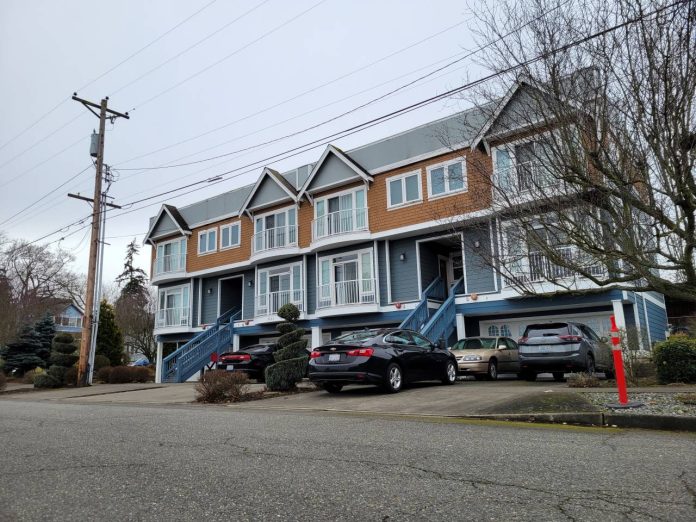
The City enacted Home in Tacoma rezones, but will it be enough to meet goals around affordability and housing growth?
After years of planning, community feedback, and revision, Tacoma finally declared its housing affordability initiative, Home in Tacoma, in effect as of February 1st.
This update to zoning regulations allows for greater flexibility in housing types, intending to fill the current and future housing gap in Tacoma by replacing rigid single family zoning with middle housing, which is composed of multiple levels of low- and medium-density zoning. Through this loosening of rules, property owners across Tacoma can contribute to a greater diversity of housing to help meet the needs of all residents, at whatever stage of life they may be in.
Pierce County’s Vision 2040 plan allocates Tacoma a planning target of 59,800 new housing units and 127,000 new residents between 2010 and 2040. Adding 127,000 new residents to Tacoma’s 2010 population (just under 200,000) would put the city at population just above 325,000. “These allocations are significantly higher than current forecasts and represent a shift in current trends,” the City’s housing element plan notes. Tacoma’s population surpassed 225,000 residents in the state’s April 2024 estimates.
Home in Tacoma is part of the City’s Affordable Housing Action Strategy, which recognizes that tens of thousands of the City’s current residents live in precarious housing conditions where they barely or don’t make ends meet and are at the cusp of ruin. The first stated objective of the strategy is the development of affordable housing units. According to the City, they’ve backed the creation of nearly 2,500 affordable units, approaching halfway to their 2028 goal of 6,000 affordable units. These units took over five years to construct, so it is unclear if the City will reach its goal by the stated deadline.
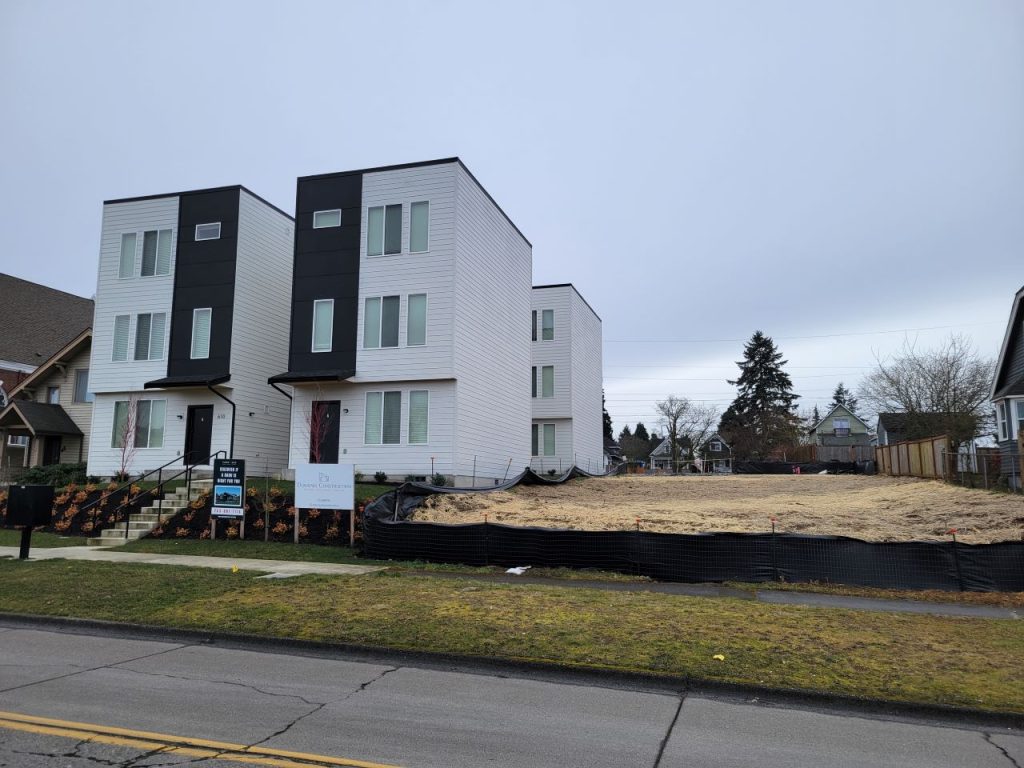
City officials have emphasized that Home in Tacoma provides options; it doesn’t require landowners redevelop their lots, despite opponents stroking that fear.
Any new development will still need to be approved by the City’s permitting staff before ground can be broken; a review process that historically is relatively quick process taking around a month on average. This timeline could be longer depending on project complexity and how inundated the department is with applications.
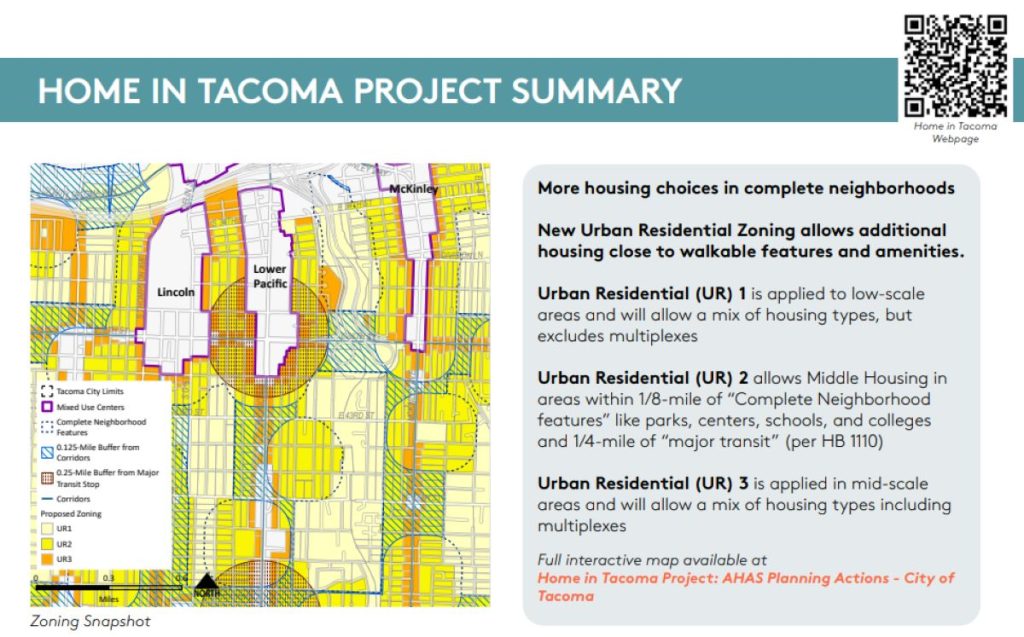
Further, existing single family homes fall under the low-scale zoning class and would be considered “houseplexes,” a single structure containing between one and six housing units. Thus, they should not need to be updated to comply with density requirements. Though keep in mind there are design, form, tree canopy and other requirements for owners to consider. The official design and development standards for Home in Tacoma describes design, form, tree canopy and other standards.
“Houseplexes are intended to continue the existing pattern of lowscale neighborhoods with detached homes along the street, generous backyards, as well as sideyards creating a rhythm of light and air between buildings,” the City wrote in the plan. “This housing type enables ‘house scaled’ structures with higher densities that allow more people to enjoy a traditional house and yard arrangement.”
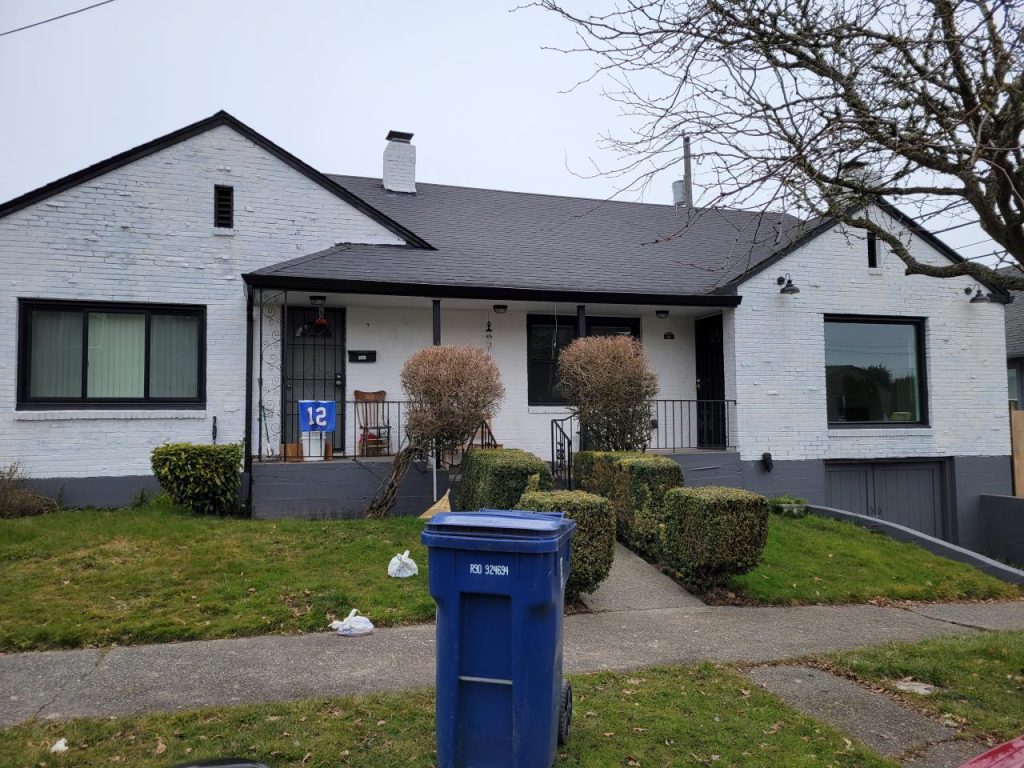
Whose responsibility is it?
The City of Tacoma expects a majority of the housing stock growth to come from private development. The City’s goal of 6,000 new affordable homes-would only serve around 14,000 residents (based on the city’s average household size of 2.38). The Tacoma Comprehensive Plan, published in August 2024, states at least 59,000 new housing units will be needed by 2050 to meet expected population growth, with at least 30% of that number being marked as affordable housing.
If Tacoma’s rate of development — nearly 2,500 units constructed in the last 5 years — is maintained with no disruptions, only around 15,000 housing units would be built by the City by 2050. The remaining addition of around 45,000 homes would need to come from increased homebuilding beyond the existing trajectory — likely from both the market and public/nonprofit sectors to meet the demand at all levels of income.
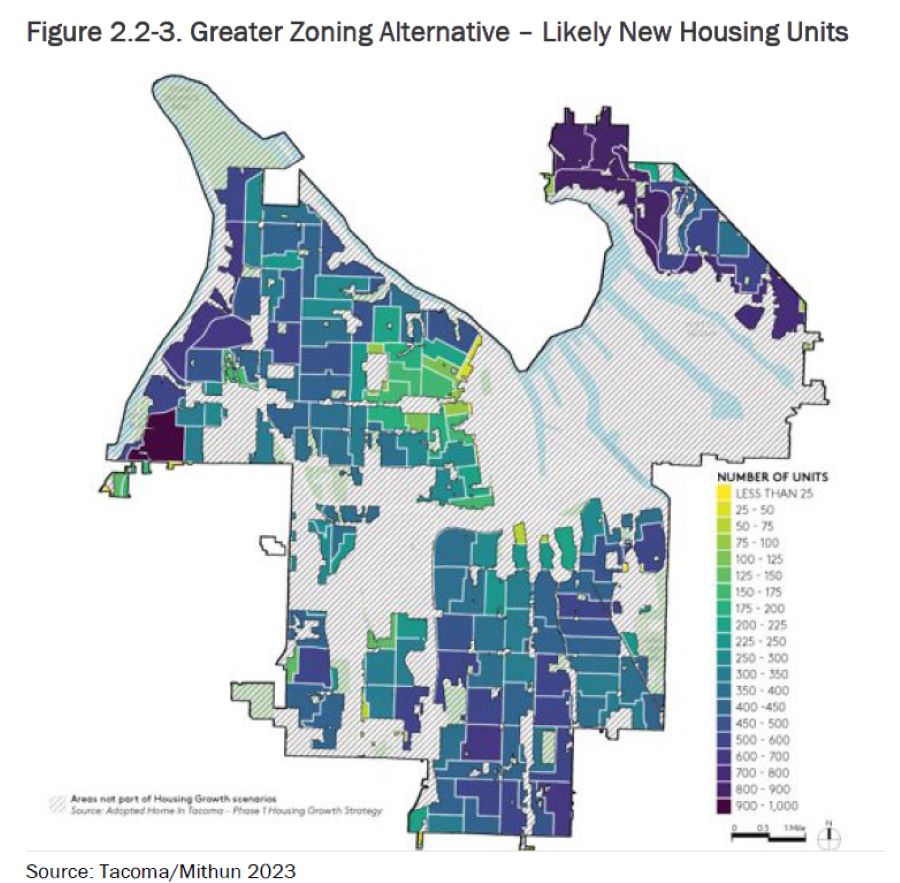
It is unclear how widespread or quickly current landowners and developers could be expected to jump on these new opportunities to build out theoretical housing capacity in the real world. Some builders already have, evidenced by development announcements and projects springing up around town in recent years in anticipation of the changes. But Tacoma’s growth rate still pales in comparison to the fastest-growing cities in the region, like Seattle and Shoreline.
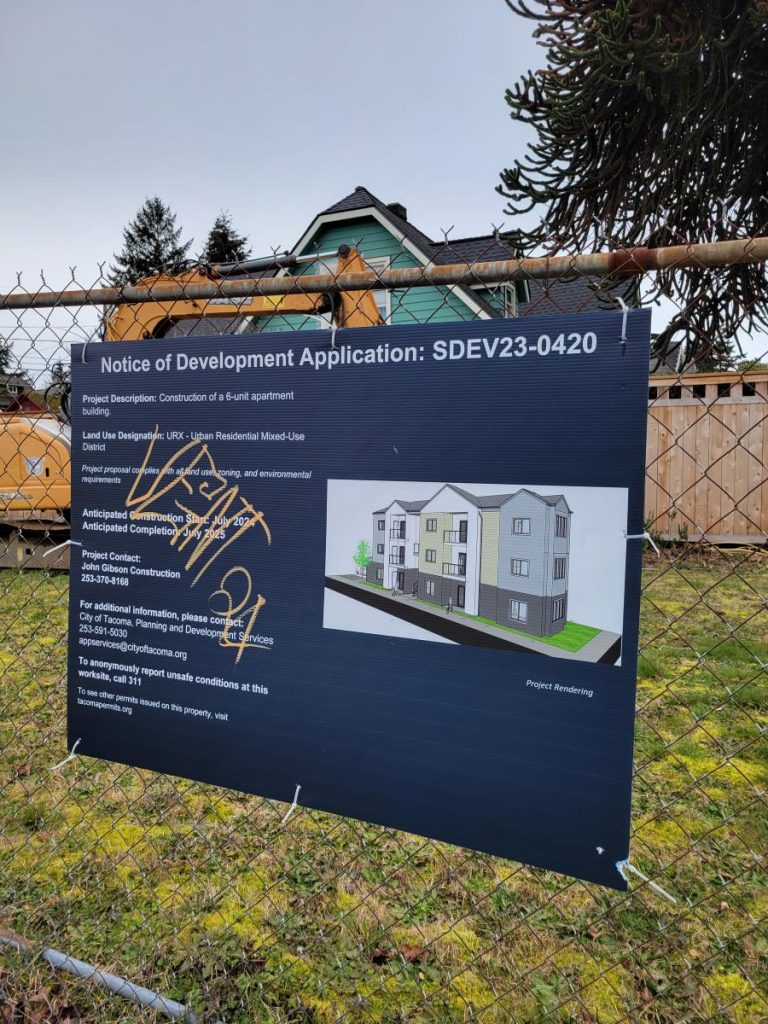
Additionally, it is unclear how the City would ensure that 30% of housing units would be affordable if a majority of low-scale, multi-unit housing would be owned by private landowners. There are incentives offered to owners that construct affordable units, but these incentives mainly lower or eliminate certain design requirements like tree canopy requirements and alley access, rather than stronger financial incentives, a more motivating factor for profit-oriented owners and cash-strapped nonprofits.
How we got here
For many Tacoma residents, the first time they heard of Home in Tacoma was in a 2021 city-wide mailer announcing that the plan was in its final stages of drafting and was set to be voted on by city council in December 2021. The City of Tacoma saw enough pushback from residents that it revised their implementation timelines to add on an entire project phase dedicated to receiving community feedback. This was seen in updated branding for Home in Tacoma, adding a “and you!” tagline to the project’s logo.

Through this change in plans, Tacoma’s Planning department hosted a number of community information events in each city council district in libraries, school gyms and community centers in addition to booths at events like the South Sound Sustainability Expo. These events saw city planners directly interfacing with residents to better inform the plan, including form and design guidelines, tree canopy requirements, and more while soliciting feedback from residents.
The Home in Tacoma package put the City ahead of the curve in readying its once-a-decade Comprehensive Plan due in 2024. Meanwhile, Seattle is behind schedule in updating its Comprehensive Plan and meeting the deadline for middle housing reform compliance.
With the plan now in effect, we should expect Tacoma neighborhoods to transition to new forms that will better serve more residents in ways they want. But how quickly that change will happen or if it will be enough remains an open question.

Kevin Le
Kevin Le is a Geographic Information Science (GIS) professional in Tacoma. He enjoys studying spatial data to better understand our urban landscapes and redesign cities to better serve all people.

